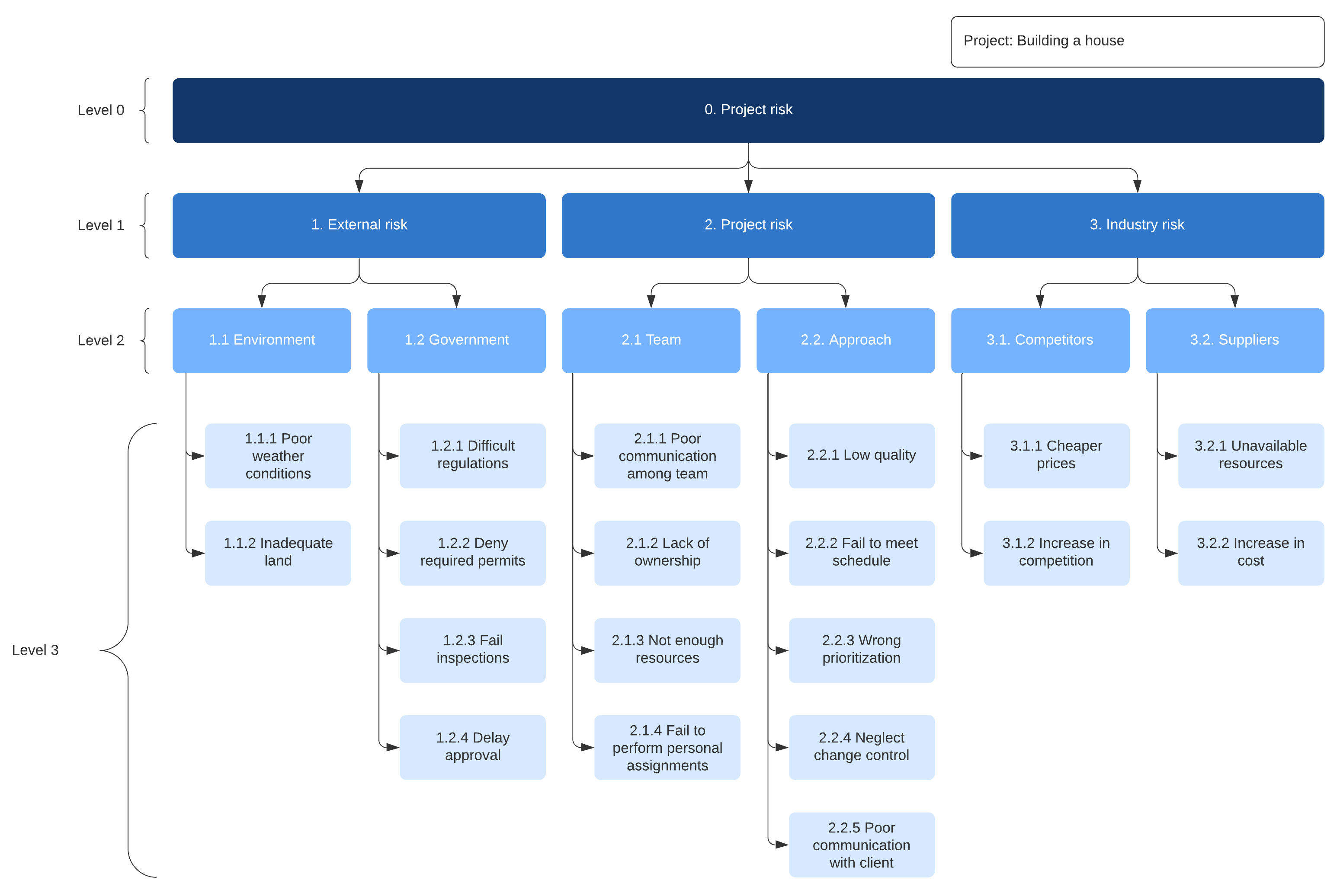Steps of the risk management process
- Identify the risk
- Analyze the risk
- Prioritize the risk
- Treat the risk
- Monitor the risk
With any new project comes new risks lying in wait. These risks can differ from misalignment between stakeholders to lack of resources to major regulatory changes in the industry. Risks can cause small delays or significant impacts, so it's important to understand your risks and how to manage them for your best chance of success. This is especially important, considering a staggering 65% of projects fail.
While your organization can’t entirely avoid risk, you can anticipate and mitigate risks through an established risk management procedure. Follow this risk management framework to beat the odds and streamline your team for success, making the team more agile and responsive when risks do arise.
What is the risk management process?
It's simply that: an ongoing process of identifying, treating, and then managing risks. Taking the time to set up and implement a risk management process is like setting up a fire alarm––you hope it never goes off, but you’re willing to deal with the minor inconvenience upfront in exchange for protection down the road.
Identifying and tracking risks that might arise in a project offers significant benefits, including:
- More efficient resource planning by making previously unforeseen costs visible
- Better tracking of project costs and more accurate estimates of return on investment
- Increased awareness of legal requirements
- Better prevention of physical injuries and illnesses
- Flexibility, rather than panic, when changes or challenges do arise
Risk management steps
Follow these risk management steps to improve your process of risk management.
1. Identify the risk
Anticipating possible pitfalls of a project doesn't have to feel like gloom and doom for your organization–quite the opposite. Identifying risks is a positive experience that your whole team can take part in and learn from. Project risks are anything that might impact the project’s schedule, budget, or success.
Leverage the collective knowledge and experience of your entire team. Ask everyone to identify risks they've either experienced before or may have additional insight about. This process fosters communication and encourages cross-functional learning.

Use a risk breakdown structure to list out potential risks in a project and organize them according to level of detail, with the most high-level risks at the top and more granular risks at the bottom. This visual risk management strategy will help you and your team anticipate where risks might emerge when creating tasks for a project.
Once you and your team have compiled possible issues, create a project risk log for clear, concise tracking and monitoring of risks throughout a project.

A project risk log, also referred to as a project risk register, is an integral part of any effective risk management process. As an ongoing database of each project’s potential risks, it not only helps you manage current risks but serves as a reference point on past projects as well. By outlining your risk register with the proper data points, you and your team can quickly and correctly identify and assess possible threats to any project.
2. Analyze the risk
Once your team identifies possible problems, it's time to dig a little deeper. How likely are these risks to occur? And if they do occur, what will the ramifications be? How will you respond?
During this step, your team will estimate the probability and fallout of each risk to decide where to focus first. Then you will determine a response plan for each risk. Factors such as potential financial loss to the organization, time lost, and severity of impact all play a part in accurately analyzing each risk. By putting each risk under the microscope, you’ll also uncover any common issues across a project and further refine the risk management process for future projects.

Ready to improve your systems and reduce failures through FMEA risk analysis?
Read how3. Prioritize the risk
Now prioritization begins. Rank each risk by factoring in both its likelihood of happening and its potential effect on the project.
This step gives you a holistic view of the project at hand and pinpoints where the team's focus should lie. Most importantly, it’ll help you identify workable solutions for each risk. This way, the risk management workflow itself is not interrupted or delayed in significant ways during the treatment stage.
4. Treat the risk
Once the worst risks come to light, dispatch your treatment plan. While you can’t anticipate every risk, the previous steps of your risk management process should have you set up for success. Starting with the highest priority risk first, task your team with either solving or at least mitigating the risk so that it’s no longer a threat to the project.
Effectively treating and mitigating the risk also means using your team's resources efficiently without derailing the project in the meantime. As time goes on and you build a larger database of past projects and their risk logs, you can anticipate possible risks for a more proactive rather than reactive approach for more effective treatment.
5. Monitor the risk
Clear communication among your team and stakeholders is essential when it comes to ongoing monitoring of potential threats. Send regular project updates to the team and other stakeholders. Check in with your risk managers individually to ensure there aren’t any red flags popping up throughout the project.
Be sure to actively maintain the risk register—it should be a living document that you and your team refer to often. As risks change or evolve, those should be updated in the log for everyone to see. That way, everyone can stay on the same page and respond to risks faster and more proactively.
While it may feel like you're herding cats sometimes, with your risk management plan and its corresponding project risk register in place, keeping tabs on those moving targets becomes anything but risky business.

Be better prepared and implement a complete risk management strategy.
Learn howAbout Lucidchart
Lucidchart, a cloud-based intelligent diagramming application, is a core component of Lucid Software's Visual Collaboration Suite. This intuitive, cloud-based solution empowers teams to collaborate in real-time to build flowcharts, mockups, UML diagrams, customer journey maps, and more. Lucidchart propels teams forward to build the future faster. Lucid is proud to serve top businesses around the world, including customers such as Google, GE, and NBC Universal, and 99% of the Fortune 500. Lucid partners with industry leaders, including Google, Atlassian, and Microsoft. Since its founding, Lucid has received numerous awards for its products, business, and workplace culture. For more information, visit lucidchart.com.
Related articles
An overview of business contingency plans
Many circumstances have the potential to disrupt your business, but you can prepare for potential disaster with a business contingency plan. Read over the steps and check out our templates to build out your own plan.
A complete guide to the risk assessment process
Identify and prepare for potential risks in your workplace. This article explains what the risk assessment process is and how you can start your own in five simple steps (including templates!).

